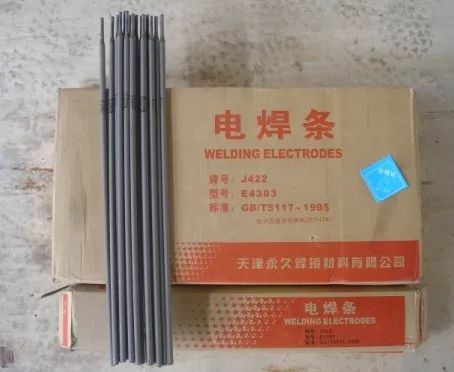I believe that all welders know that welding rods are necessary for welders to weld. After the welding tongs are connected to the welding rod, they can start working on the workpiece.
However, do welders know the model of your welding rod?
The use of welding rods is very particular. Welding rods made of the wrong material cannot guarantee the welding strength, so they must be ground and re-welded. If it is a large one, it will be bad. The welding place will crack, and serious accidents may cause life and property safety.
So, we need to understand ~ what are the components of welding rods?
Xinfa welding equipment has the characteristics of high quality and low price. For details, please visit: Welding & Cutting Manufacturers – China Welding & Cutting Factory & Suppliers (xinfatools.com)
The welding rod is a melting electrode coated with a coating for arc welding. It consists of two parts: the coating and the welding core.
The metal core covered by the coating in the welding rod is called the welding core. The welding core is generally a steel wire with a certain length and diameter.
[The welding core has two functions]
1. Conducting welding current, generating an arc to convert electrical energy into heat energy.
2. The welding core itself melts as a filler metal and fuses with the liquid parent metal to form a weld. When welding with welding rods, the welding core metal accounts for a part of the entire weld metal. Therefore, the chemical composition of the welding core directly affects the quality of the weld. Therefore, the steel wire used as the welding rod core has its brand and composition specified separately.
If it is used as a filler metal in fusion welding methods such as submerged arc automatic welding, electroslag welding, gas shielded welding, and gas welding, it is called welding wire.
The welding rod coating refers to the coating layer applied on the surface of the welding core. The coating decomposes and melts during the welding process to form gas and slag, which plays a role in mechanical protection, metallurgical treatment, and improvement of process performance.
The components of the coating include: minerals (such as marble, fluorite, etc.), ferroalloys and metal powders (such as ferromanganese, ferrotitanium, etc.), organics (such as wood powder, starch, etc.), and chemical products (such as titanium dioxide, water glass, etc.). The coating of the welding rod is an important factor in determining the quality of the weld.
[Role in the welding process]
1. Improve the stability of arc burning. It is not easy for a bare welding rod without a coating to ignite the arc. Even if it is ignited, it cannot burn stably.
2. Protect the welding pool During welding, oxygen, nitrogen and water vapor in the air penetrate into the weld, which will have an adverse effect on the weld. Not only will pores be formed, but it will also reduce the mechanical properties of the weld and even cause cracks. After the welding rod coating melts, a large amount of gas is generated to cover the arc and the molten pool, which will reduce the interaction between the molten metal and the air. When the weld cools, the melted coating forms a layer of slag, covering the surface of the weld, protecting the weld metal and cooling it slowly, reducing the possibility of pores.
3. Ensure the deoxidation of the weld and the removal of sulfur and phosphorus impurities. Although protection is carried out during the welding process, it is inevitable that a small amount of oxygen will enter the molten pool, oxidize the metal and alloy elements, burn the alloy elements, and reduce the quality of the weld. Therefore, it is necessary to add a reducing agent (such as manganese, silicon, titanium, aluminum, etc.) to the electrode coating to reduce the oxides that have entered the molten pool.
4. Supplement alloy elements for the weld. Due to the high temperature of the arc, the alloy elements of the weld metal will be evaporated and burned, which will reduce the mechanical properties of the weld. Therefore, it is necessary to add appropriate alloy elements to the weld through the coating to compensate for the burning of the alloy elements and ensure or improve the mechanical properties of the weld. For the welding of some alloy steels, it is also necessary to infiltrate the alloy into the weld through the coating so that the weld metal can be close to the metal composition of the parent metal, and the mechanical properties can catch up with or even exceed the base metal.
5. Improve welding productivity and reduce spatter. The electrode coating has the effect of increasing the molten droplet and reducing spatter. The melting point of the electrode coating is slightly lower than the welding point of the welding core, but because the welding core is in the center of the arc and has a higher temperature, the welding core melts first and the coating melts a little later. At the same time, since the metal loss caused by spatter is reduced and the deposition coefficient is increased, the welding productivity is also improved.
Post time: Nov-11-2024




